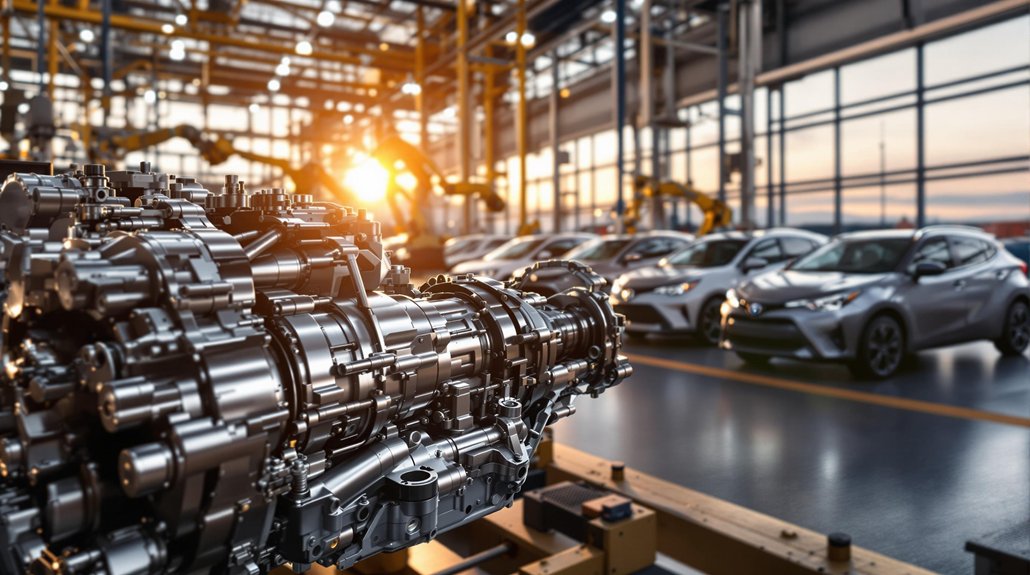Toyota just dropped $88 million on hybrid tech in West Virginia. While competitors chase the EV dream, Toyota’s sticking with what works – no charging stations needed. Smart move? Maybe. Their hybrids solve real problems today: better fuel economy, lower emissions, no range anxiety. Critics call them dinosaurs, but Toyota’s laughing all the way to the bank with 2,000 jobs secured and $2.8 billion total invested. The future might prove them right.
While many automakers rush headlong into all-electric vehicles, Toyota is doubling down on hybrid technology with an $88 million investment in its West Virginia plant. The money will fund production of next-generation hybrid transaxles, scheduled to begin rolling off assembly lines in late 2026. It’s a move that pushes Toyota’s total investment in the facility to a whopping $2.8 billion. Not exactly pocket change.
The automotive giant seems unbothered by the EV hype train. Their strategy? Stick with what works. Hybrid technology is proven, reliable, and doesn’t leave drivers stranded when charging stations are scarce. The transaxles Toyota plans to manufacture are critical components that seamlessly transfer power between the engine, electric motor, and wheels in hybrid vehicles.
Toyota’s reluctance to go all-in on EVs isn’t just stubborn Japanese corporate culture. There’s logic behind it. EV adoption faces serious hurdles – insufficient charging infrastructure, grid limitations, and consumers who aren’t ready to deal with range anxiety. Hybrids offer a middle ground. Better fuel economy, fewer emissions, without the hassle. This approach aligns with the global trend toward green revolution while addressing the intermittency challenges that plague fully renewable energy sources.
Toyota’s balanced approach isn’t mere stubbornness—it’s pragmatic recognition that hybrids solve today’s problems while the EV infrastructure catches up.
The Prius remains Toyota’s hybrid poster child, but the technology is spreading across both Toyota and Lexus lineups. Future models promise improved efficiency, better battery performance, and enhanced software integration. The company’s slow adaptation to the full BEV market has been widely criticized by industry experts. David Rosier, Plant President, oversees the facility’s workforce of approximately 2,000 employees who will be instrumental in this hybrid transaxle expansion. They’re not just practical; they’re getting cooler too.
This investment fits neatly into Toyota’s broader sustainability vision. While competitors bet everything on battery electric vehicles, Toyota hedges with a portfolio approach: hybrids, plug-in hybrids, BEVs, and hydrogen fuel cell vehicles. Smart.
The National Renewable Energy Laboratory projects that BEV and PHEV numbers could increase tenfold by 2030. That’s a lot of new demand on an already strained electrical grid.
Toyota’s hybrid strategy might seem old-school, but it’s delivering real emissions reductions now, not someday. In the race to electrification, Toyota’s taking the tortoise approach. Slow, steady, and surprisingly sensible. Sometimes boring wins the race.
References
- https://global.toyota/en/newsroom/corporate/42682978.html
- https://pressroom.toyota.com/toyotas-investment-in-weavegrid-signals-broadened-commitment-to-battery-and-plug-in-hybrid-electric-vehicle-customer-experience/
- https://cleantechnica.com/2025/04/24/toyota-invests-more-into-old-tech-in-west-virginia/
- https://www.putnamtoyota.com/2025/03/31/10-reasons-why-the-2025-toyota-prius-is-a-smart-investment/
- https://www.toyotaclevelandheights.com/driving-innovation-toyotas-2025-vision-unveiled/








